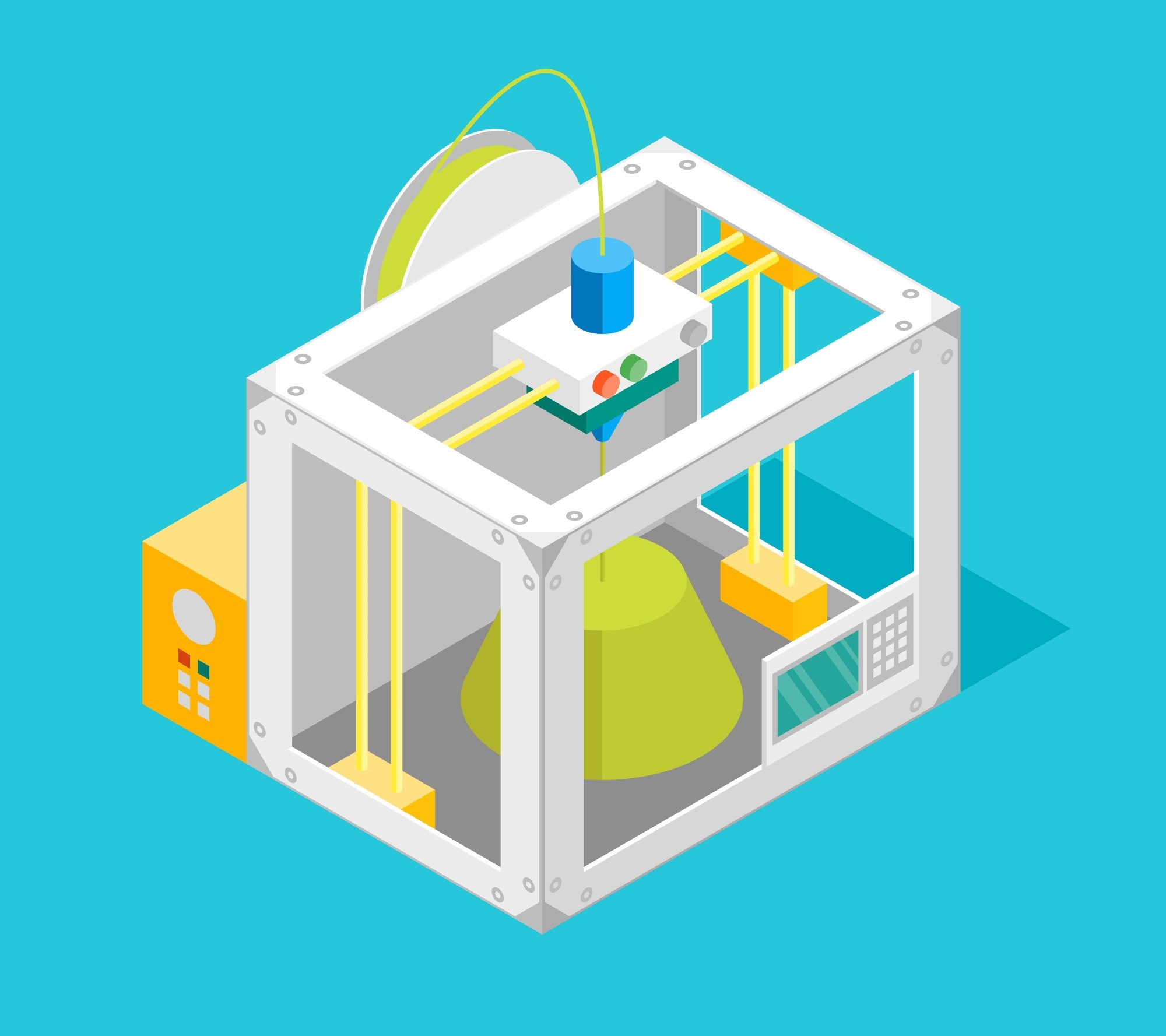3D printer cooling systems are an integral printer component. This article will discuss the importance of a 3D printer cooling system and how proper cooling of hot filaments can avoid structural and quality issues with printed components.

Image Credit: Bigmouse108/Shutterstock.com
Why are 3D Printer Cooling Systems Important?
In 3D printing, materials are heated and extruded to produce the final printed part. The heated nozzle moves according to a computer-generated three-dimensional model. However, if the extruded filament is not cooled properly once it has left the heated nozzle, dimensional problems can occur.
A 3D printer cooling system helps to ensure the durability of the final build. If dimensional issues persist due to insufficient cooling, then the final piece will be rejected, costing time and materials.
Potential Print Problems
Sometimes, effective 3D printer cooling is unimportant, especially when the layer is merely resting on the previously printed one. However, with more complex builds, a 3D printer cooling system is essential to avoid potential print quality problems such as warping.
If the final product has an overhang, the freshly extruded material can droop and fill the overhang. If a bridge is being printed the heated polymer can dip, causing the bridge to potentially collapse.
Both of these critical problems can cause final build quality issues, facilitating the need to pause printing and potentially waste time, materials, and money. Moreover, if the final product is sold or used with these issues present, critical failures can occur, potentially impacting safety and consumer confidence.
Cooling the filament needs to be timed precisely to ensure optimal printing. An important consideration is the operation of the 3D printer itself: if the filament is cooled too soon, it can solidify in the nozzle itself, causing the printer to jam. This also costs time and money, as the print process needs to be halted.
3D Printer Cooling Systems
3D printer cooling systems should not, however, cool the hot end of the extruded material. Instead, they should rapidly cool the fresh extrusion once it has left the nozzle. This must be done almost immediately to avoid the aforementioned issues.
Fans are the most commonly used 3D printer cooling systems. By blasting ambient air at the extruded filament, they rapidly cool the material to quickly set it. 3D printer cooling fans are relatively inexpensive and easy to install, operate, and maintain.
3D printer cooling fans can be programmed to run at different speeds throughout the entire process. This variability provides advantages in controlling the final build quality of the printed product.
Another type of 3D printer cooling system that has been proposed in the additive manufacturing industry is a water cooling system. However, these systems are not as widespread. Water cooling has been used for years in computers and commercial products, lending credence to its use in 3D printing.
Water cooling systems, whilst they can provide benefits for 3D printers, do have some drawbacks. Firstly, they may be seen as over-engineered. A fan is easier and cheaper. However, sometimes, standard fans cannot cope with the high-power requirements of new-generation printers, making the technology a bottleneck.
Another valid concern with water cooling systems is that leakage may occur, which can cause power failures and safety issues. This would increase the need for maintenance and, potentially, the need to completely replace equipment.
One distinct advantage of a water-powered 3D printer cooling system is improved heat transfer efficiency. Water-cooled heat exchange systems can be placed further from the heat source, even outside the printer itself. Continuous water flow avoids water heating and rendering the cooling system ineffective.
Components that Utilize 3D Printer Cooling Systems
Different components can benefit markedly from an efficient 3D printer cooling system. These include:
- Control boards.
- Nozzles.
- Motor systems.
- Power supplies.
It should be noted that 3D printer cooling systems are significantly less common in motor systems, but some stepper motors include them.
3D Printer Cooling: In Summary
A 3D printer cooling system is an integral component. As printers become more sophisticated and high-powered, the need for advanced 3D printer cooling technologies is pressing.
Fans are the most common type of cooling technology used currently, but they cannot deal with some of the high temperatures needed to produce parts for sectors such as construction, industrial manufacturing, and the space industry. A water-cooled 3D printing cooling system is ideal due to improved heat transference.
As additive manufacturing becomes more commonplace in a multitude of industries, 3D printer cooling technologies will continue to evolve and play a vital role in the manufacture of high-quality, durable printed products and industrial parts.
More from AZoM: Polymer Innovations in 3D Printing
References and Further Reading
Stevenson, K (2016) The Critical Importance of Cooling During Plastic 3D Printing [online] fabbaloo.com. Available at:
https://www.fabbaloo.com/2016/11/the-critical-importance-of-cooling-during-3d-printing
Coolingstyle (2022) 3d Printer Cooling: Do I Really Need a 3D Printer Cooling System? [online] coolingstyle.com. Available at:
https://coolingstyle.com/3d-printer-cooling/
Carrier, P (2020) Why would you need liquid cooling? How is it any good? Why not use a Peltier cooler? [online] dyzedesign.com. Available at:
https://dyzedesign.com/2020/02/water-cooling-and-peltier-cooling-in-3d-printers/
Disclaimer: The views expressed here are those of the author expressed in their private capacity and do not necessarily represent the views of AZoM.com Limited T/A AZoNetwork the owner and operator of this website. This disclaimer forms part of the Terms and conditions of use of this website.